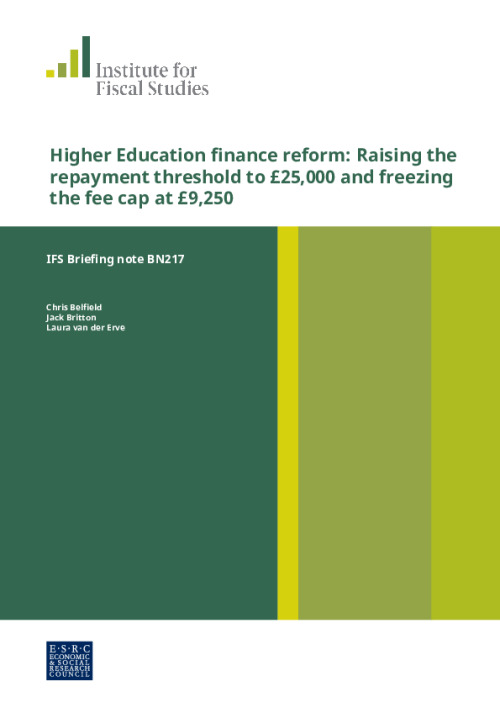On Sunday, the Prime Minister Theresa May announced that the income threshold above which graduates start making repayments on their student loans would be increased from £21,000 to £25,000 for all those who started university after 2012, and that the cap on tuition fees at English universities would be frozen at its current level of £9,250.
Key Findings
- Increasing the repayment thresholds on student loans to £25,000 and removing the cash-terms freeze until 2021 is a significant giveaway to graduates. This reduces average graduate lifetime repayments by around £10,000. These benefits are greatest amongst those in the middle of the graduate earnings distribution, with some benefiting by up to £15,700 as a result of the changes. This reform increases the cash in pocket of graduates, with all those earnings more than £26,500 making annual repayments £500 lower in 2020 in cash terms. Now 83% of graduates are forecast to not fully repay their loans within the 30-year repayment period (up from 77%).
- Freezing the cap on tuition fees at £9,250 has little impact in the short-term, but has potentially significant implications if kept in place in the long-run. This reduces the forecast average debt on graduation for students starting a three-year degree this autumn, from £50,600 to £49,800. However, as most students do not pay off the full value of their debt this only reduces the repayments of the highest earning graduates.
- These reforms will increase the long-run government contribution to the cost of providing higher education by around £2 billion per year (raising the repayment threshold costs £2.3 billion and freezing fees saves £0.3 billion) This increases the RAB charge on student loans from 31% to 45% for students starting in 2017. This is entirely due to the reduced graduate repayments as a result of the higher repayment threshold (freezing fees slightly reduces the RAB). However, the impact on the deficit (PSNB) will be negligible in the short-run because student loans do not impact the deficit until they are written off after 30 years.
- Freezing the cap on tuition fees with no compensating teaching grants directly reduces university funding. Again, the impact is small in the short-term but this will grow the longer a freeze is kept in place. This raises questions about the introduction of the Teaching Excellence Framework and creates uncertainty about the long-run path of university funding. The freeze appears to continue a historical trend that higher education funding per student has consistently been characterised by gradual real terms falls over a number of years punctuated periodically by relatively sharp increases following large-scale reforms.












